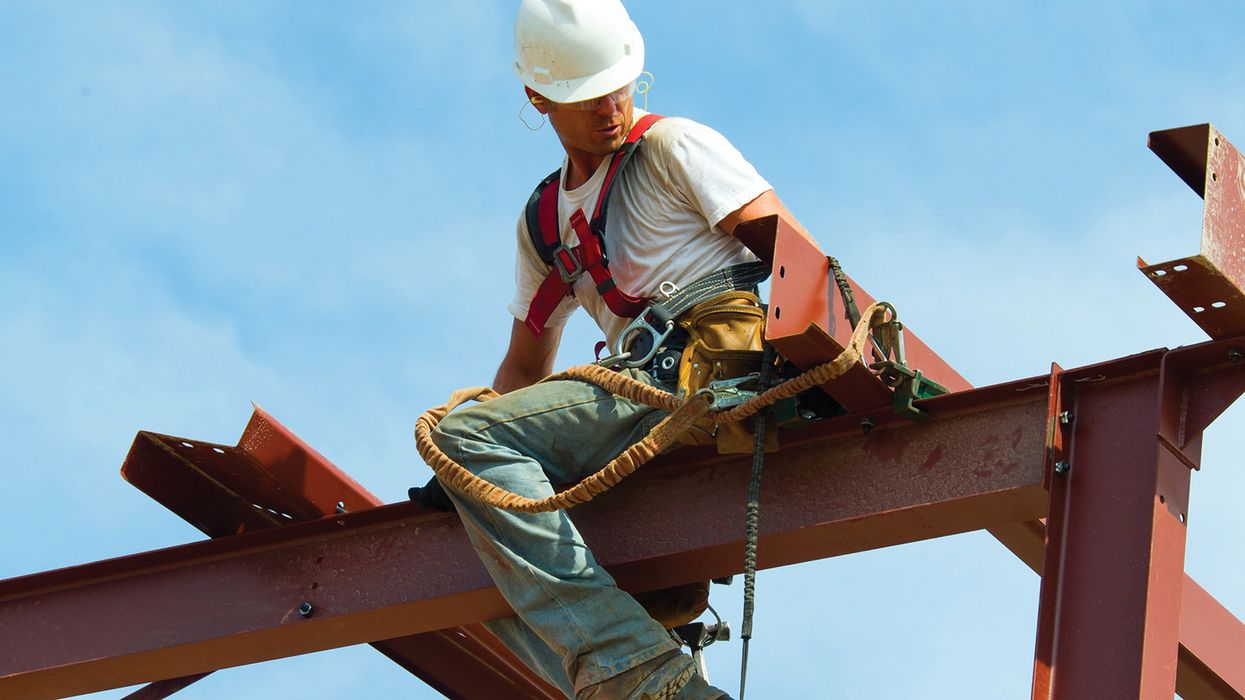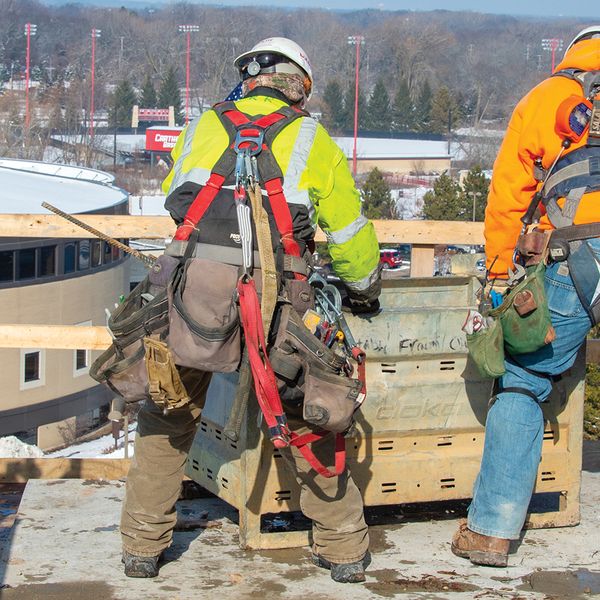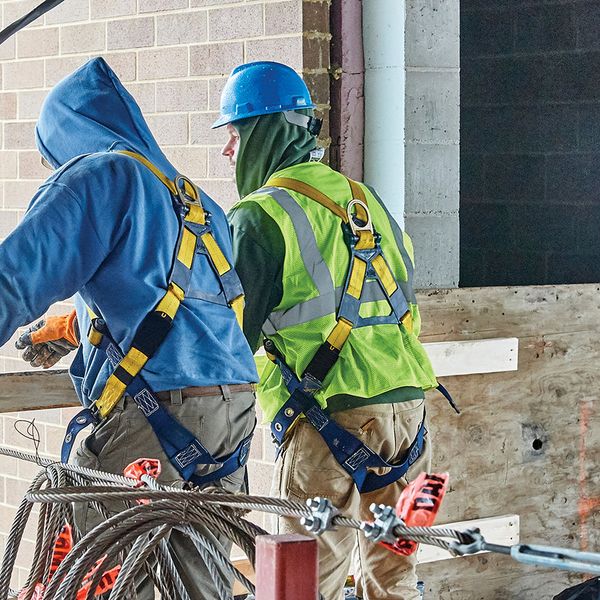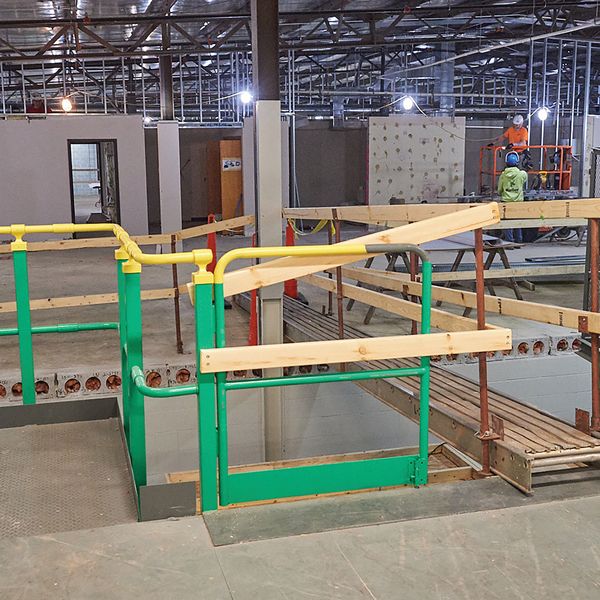Lucky to be alive, so why not learn from it?
Falls continue to be the leading cause of death in construction and lead OSHA's most frequently cited standard for the 13th consecutive year. So, why aren't we learning from these incidents that account for about one-third of all fatalities in the industry?
One Windsor, Ontario Ironworker is feeling 'lucky to be alive' after surviving a 150-foot fall from the Ambassador Bridge into the Detroit River in July 2023. Miraculously, the worker was rescued from the water within minutes by nearby boaters who happened to see the fall.
Although this story ends on a high note, the overall novel isn’t so positive. In 2000, another worker lost their life in a similar fall, prompting the coroner's inquest to make 50 recommendations to prevent future deaths. So, clearly something is still not working, and we are failing to learn from these incidents.
Fall prevention strategy
OSHA recognizes that incidents involving falls can be complex events, frequently involving a multitude of factors. As such, fall protection standards are designed to address both the human and equipment-related issues in protecting workers from falls.
What strategies can be learned and implemented following these deadly incidents?
- Assess the workplace to determine if walking or working surfaces have the necessary strength and structural integrity to safely support the workers.
- Fall protection is required when construction workers are working at heights of 6 feet or greater above a lower level.
- Fall protection is also required at heights of less than 6 feet when working near dangerous equipment, for example, working over machinery with open drive belts, pulleys, or gears or open containers of dangerous materials (such as vats of degreasing agents or acid).
- If work surfaces will safely support the work activity, select and provide workers with fall protection systems that comply with the criteria found in 29 CFR 1926.502. A personal fall arrest system is a system used to safely stop (arrest) a worker who is falling from a working level. It consists of an anchorage, connectors, and a body harness and may also include a lanyard, deceleration device, lifeline, or suitable combination.
- Fall protection systems must be rigged so workers can neither free fall more than 6 feet nor contact any lower level.
- Fall protection systems must also bring a worker to a complete stop and limit the maximum deceleration distance a worker travels to 3.5 feet.
- Use safety nets! 1926.502(c) requires safety nets to be installed as close as practicable under surface on which workers are working and never more than 30 feet below that level. When nets are used on bridges, the potential fall area from the walking-working surface to the net must be unobstructed. All safety nets must be installed with sufficient clearance underneath to prevent a falling body from hitting the surface or structure below the net.
Not sure what the difference is between fall protection and fall prevention? Read our In-Depth article to learn more.
Who needs fall protection?
OSHA identifies areas and activities where fall protection or falling object protection may be needed, but the employer is tasked with making the final assessment to ensure worker protection. In addition to those working or walking on surfaces 6 feet or more above a lower level, workers that may need fall protection include those performing work:
- On bridges, ramps, runways, or other elevated walkways;
- In hoist areas;
- On steep roofs, balconies, or other elevated platforms;
- At the edge of an excavation;
- At, above, or near wall openings;
- On a walking or working surface with holes (i.e., skylights) or unprotected edges;
- Above dangerous equipment;
- Above a lower level where leading edges are under construction; and
- On the face of formwork and reinforcing steel.
OSHA may also require fall protection where a worker is:
- Constructing a leading edge;
- Performing overhand bricklaying and related work; or
- Engaged in roofing work on low-slope roofs, precast concrete erection, or residential construction.
The right to a safe workplace
Workers have the right to a place of employment where conditions don’t pose a risk of serious harm. According to the General Duty Clause, employers must provide a safe workplace that’s free from recognized hazards. Falling from elevations is a recognized hazard from which employers must control and keep workers protected.
In addition to implementing controls, protecting workers also requires the communication of expectations and fall protection training in a language and vocabulary the worker understands. Workers must understand workplace hazards, methods to prevent them, and regulatory standards that apply to their workplace and tasks.
Employers should review records of work-related injuries and fatalities, not just from their own company but from others (such as this Ambassador Bridge incident) so they can prevent recurrence. Keep in mind, all the onus isn’t just on the employer. Workers must be empowered to say something when they see something unsafe in their work areas.
Keys to remember: Falls account for about one-third of all fatalities in the construction industry and continue to be on OSHAs most frequent citations list. Employers must learn from past workplace fatalities, recognize their causes, and implement appropriate controls to prevent future human loss.



















































